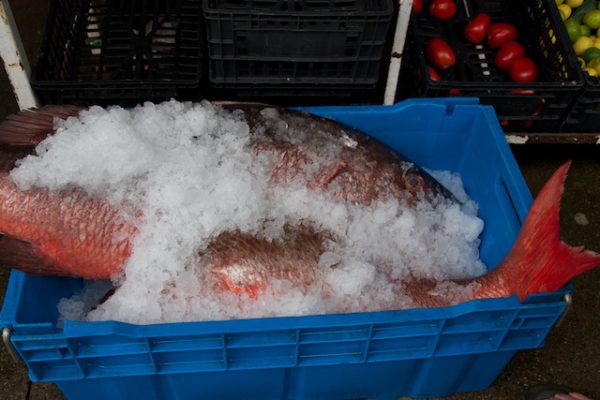Published in the Ocean Watch column, Honolulu Star-Advertiser © Susan Scott
March 18, 2013
LA CRUZ DE HUANACAXTALE, Nayarit, Mexico >> I’m back in Mexico, where for the past year I’ve moored my 37-foot ketch, Honu. While taking a break from boat work last week, I walked to the fishers’ side of the marina. Anglers keep about 70 small fishing boats on commercial piers there, and most were in from the previous night’s fishing.
Each boat held men in orange overalls, hundreds of stainless-steel hooks lined up on rods, piles of monofilament lines and nets, and to float them, objects from chunks of foam to bleach bottles to soda containers.

For half an hour, I watched fisher after fisher unload crate after crate from boat after boat. Red snappers, green mahimahi, silver tunas, brown groupers and countless other species rolled past me, all glistening on ice in the morning sun.
My first instinct was of good food, and I moved to the dockside market to get my share. But as I watched the men clean the fish, my science side stopped me.
The scene, which represents only one small community, goes on daily throughout the world.How long can fishing with the aid of GPS, fish sounders, engines, nylon, steel and plastic continue before these boats come back empty? Will my purchase contribute to the current decline of the oceans’ fish stocks?
How many people would go hungry and be out of work, though, if we stopped buying fish?
There seemed little chance of that. Other shoppers, eager to get the best of the catch, pushed past me. In that crowd, would buying one little piece of snapper make a difference?
The two sides of my brain fought to a standstill.
We know that the oceans are overfished and that anglers are now taking fish too small to have reproduced. Some stocks already have collapsed, and warnings from biologists predict more crashes are coming.
Yet health experts urge us to eat more fish.
But don’t buy certain farmed fish, say researchers who study the negative effects of marine aquaculture. And if a package says the product comes from a sustainable fishery, beware. Whether a fishery is sustainable depends on whom you ask.
What’s a person to do?
For guidance, the best source I have found is the Monterey Bay Aquarium’s website, Seafood Watch, which also comes as a smartphone app(Android, iOS). The site keeps up to date on the latest studies, fishing politics and aquaculture practices. A section called “Seafood Recommendations” explains what to buy or avoid, and why, and offers ocean-friendly alternatives.
The guide isn’t a perfect solution because fish sellers, grocers and restaurateurs don’t always know where their fish came from. Even so, using Seafood Watch as a buying guide makes me feel that I’m doing my part.As the Monterey Bay Aquarium writes on its site, informed consumers can help turn the tide.
At the fish market I had my eye on the red snappers. Avoid that species, says Seafood Watch. It’s being overfished in the Gulf of Mexico.Here on the Pacific Coast? I don’t know.
I left the fish market empty-handed, walked back to my boat and made a peanut butter sandwich.
